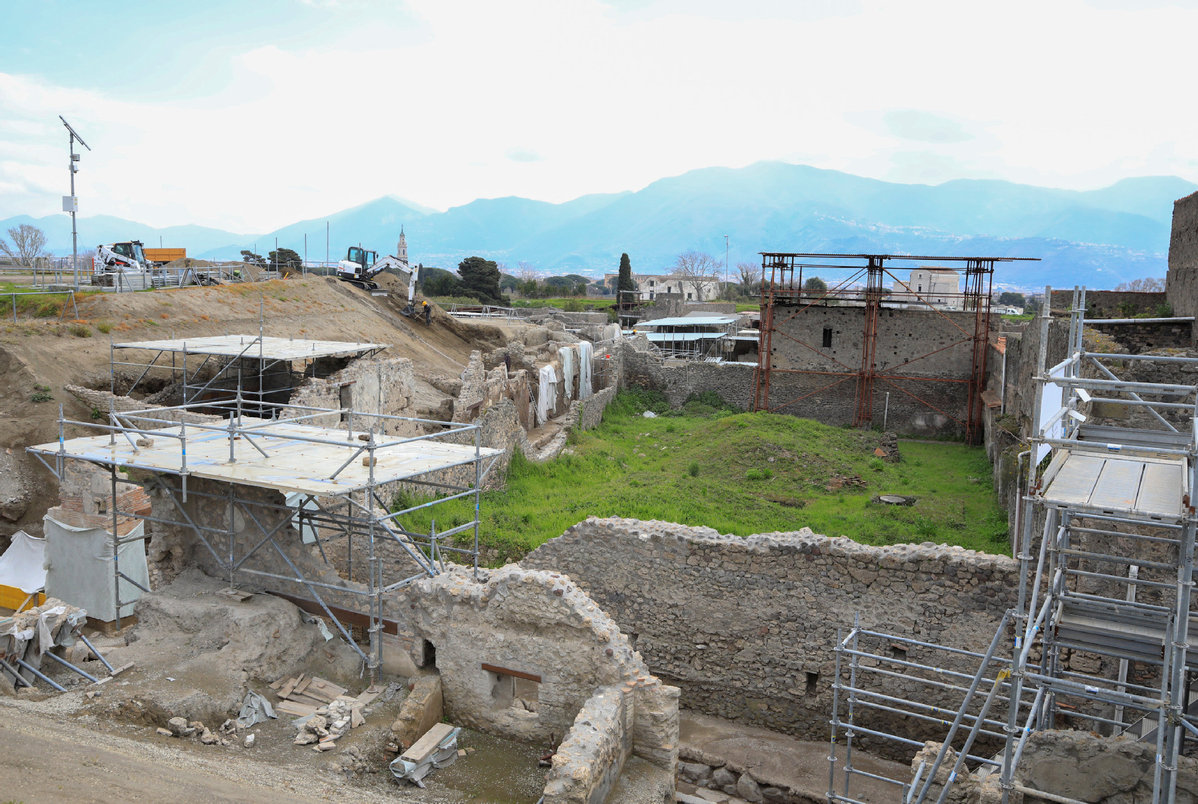Haul of strange lucky charms found in Roman Pompeii
By EARLE GALE in London | China Daily Global | Updated: 2019-08-14 09:38

Archeologists excavating the Roman city of Pompeii have uncovered a haul of lucky charms and other unusual trinkets in a home that was frozen in time nearly 2,000 years ago by a volcanic eruption that wiped the community off the map.
The items, which include mirrors and glass beads, were found in the remains of a wooden box in a home where 10 ancient bodies had previously been uncovered.
Massimo Osanna, director of the Archeological Park of Pompeii, which is close to the modern Italian city of Naples, said the items likely belonged a woman and would have been used in superstitious rituals.
"They are objects of everyday life in the female world and are extraordinary because they tell micro-stories, biographies of the inhabitants of the city who tried to escape the eruption," he told the Italian wire service Agenzia Nazionale Stampa Associata. "There are dozens of good-luck charms next to other objects that were attributed with the power of crushing bad luck."
He said the box and its contents may have belonged to one of the 10 people whose bodies were found in the house and, in addition to being worn to ward off bad luck, would have been used in rituals connected with fertility, seduction, and pregnancy.
Because none of the items contains gold, Osanna believes they belonged to a poorer member of the household, possibly a servant or slave.
The charms are the latest in a long list of discoveries made at the site that was created by the eruption of Mount Vesuvius in 79 AD and the vast cloud of hot gas and fragments, called a pyroclastic flow, that killed the city's inhabitants instantly before Pompeii was buried under a thick layer of ash that effectively froze it in time. The city was subsequently forgotten about, until it was rediscovered in 1599.
Archeologists have uncovered scores of bodies at the vast excavation site, as well as walls adorned with beautiful frescos, floors decorated with intricate mosaics, and even a horse wearing a full harness.
The latest find includes objects made of amber, amethyst, crystal, ceramic, bone, and glass, and even beetle-shaped amulets known as scarabs that originated in the Middle East. One glass bead features an engraving of the head of Dionysus, the Roman god of wine and fertility. There are also tiny carved phalluses, bone sculpted to look like miniature human skulls and fists, and small bronze bells that would have been rung to ward off bad luck.
The volcano continues to be one of the world's most active and has erupted dozens of times since 79 AD, most recently in 1944.
Osanna said the latest discovery will be displayed in Pompeii in the coming weeks.
























